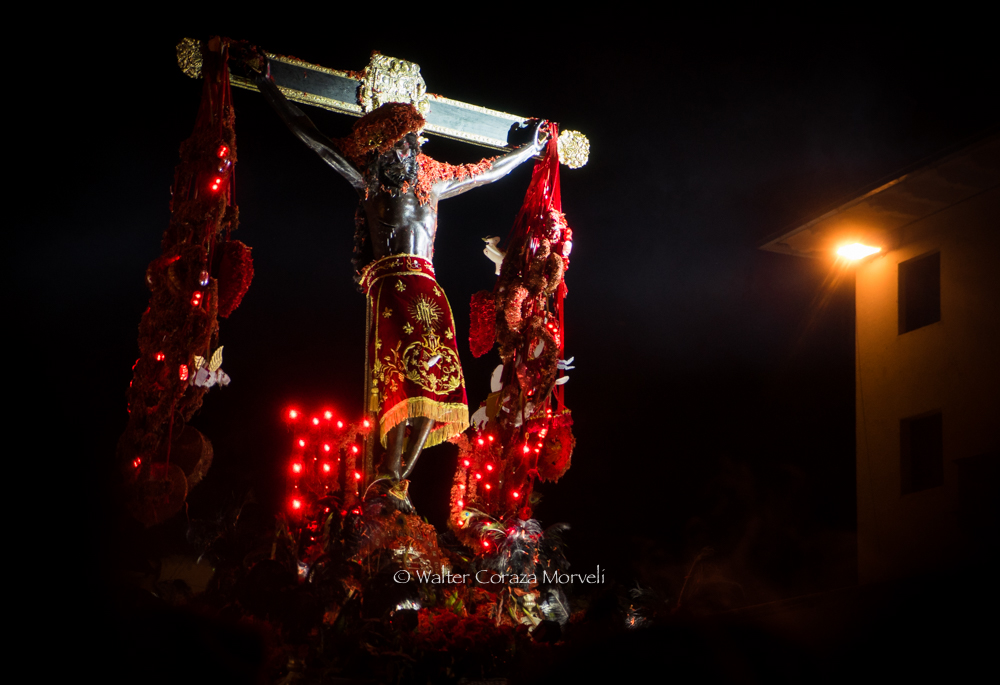Not long from now, Cusco will reach a peak of its spiritual and ritual life as a city, when the Lord of Temblors comes out from the Cathedral in procession. Of course, the Archbishop would argue this is simply a precursor, as part of Holy Week, to the central Catholic celebration in the Church’s of Christ’s birth on Easter Sunday.
The celebration of Easter, on that Sunday, takes place in Churches and in people’s homes. People gather as families, eat together, and watch movies on Christ’s life, such as the ever popular Ben Hur. On Holy Monday, however, the city lives a vast public celebration that occupies Cusco’s colonial core and draws people to it from throughout the city. It is also a ritual engine that mobilizes people long before to gather and bring to the city to sell the ñuqch’u flowers that are offered to the Lord.
The two main moments, when the figure comes from the Church and just before it enters again, the blessing, are powerful in the life of the people of Cusco and make us think about their relationship to this holy figure.
In this note, I do not wish to go into Catholic theology of holy figures, saints, and devotion. Instead, I shall write as an observer from the outside.
Throughout the year, people come before the image to speak to him and make requests of him often while leaving offerings. This is an intimate and emotion filled relationship that varies from person to person.

Around the Lord is also organized an hermandad, a fraternity (sodality), responsible for caring for the figure, obtaining appropriate robes, and dressing him. This fraternity is one of the more important social organizations within the city and its members come from many of its other central institutions. They bear and accompany the Lord throughout his procession and also provide bands to make music along the way, a kind of extra-mural liturgy, as he stops to make rests and bless, has his clothing changed, and people join or take a break from the procession.

Whether words, offerings, music, dress, companionship, prayers, dance, candles, food, or ñuqch’u flowers, people give to the Lord, they embed him in action. Each a gift in a kind of generalized reciprocity, done with love, commitment and feeling, but which hopes for a return, the Lord’s good will, his blessing for them, and sometimes very specific blessings, such as healing or help.
The Lord is a kind of outsider, ensnared or simply woven into the life of the people of Cusco to bring life and good fortune. This enmeshing of outsiders, foreigners, is an ancient and widespread idea in the Andes, if the work of Denise Arnold and others is to be believed.
As every person exercises their devotion in one or more of the ways possible, they build deeply personal and collective ties to this figure who then reciprocally becomes the enabler and guarantor of the social life of Cusco. This happens in conjunction with, although beyond the Catholic theology and practices concerning Jesus, who both is related to and is not the Lord of Temblors.
The Cathedral may house him, but he does not belong to the Church but to the people of Cusco. He is a sign, not only of Cusco weaving him into its life, but of its capture of the Church, perhaps even more than the Church’s power over Cusco.
On Holy Monday, the passion, power, and complexity of this devotion will take the Plaza and streets of the city as well as the hearts and bodies of most everyone. This is a culminating devotion in Cusco.





